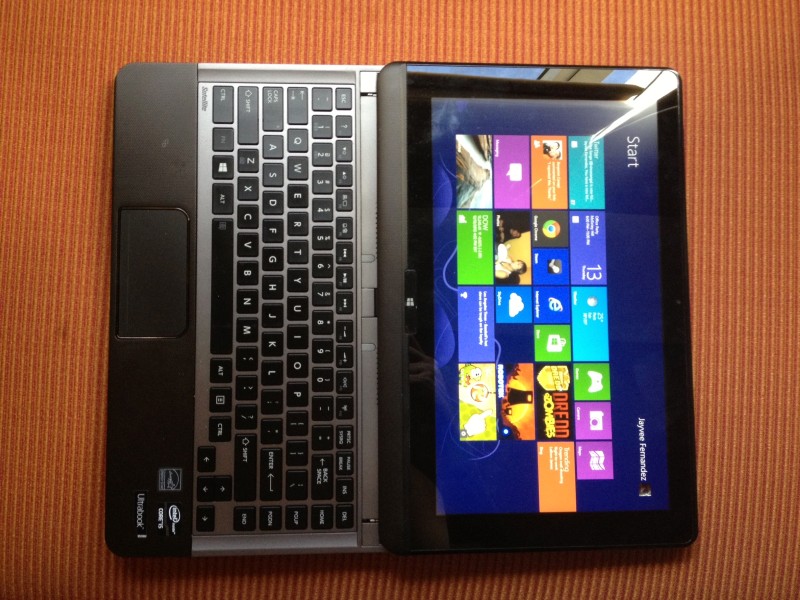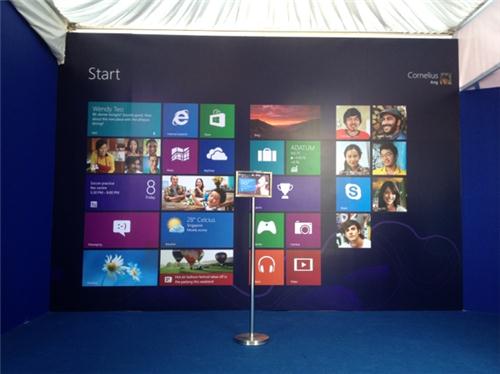Windows 8: that amalgamation of a desktop / tablet / laptop that we’ve all seen previously before. Microsoft previewed the alpha and beta builds to the public and they in turn, scrutinized the new operating system by installing it on their current computers, which as we know now is only half the picture.
Sales of Windows 8 hasn’t picked up in comparison to Windows 7. And I attribute that to two things: (1) the fact that Windows 7 came at a time where Microsoft needed a remedy to Vista and (2) Windows 7 didn’t require any new hardware. The jump from Windows 7 to a brand new Windows 8 system is like an Olympic triple jump: you’ll need to buy new hardware to fully realize its potential, you’ll need to get re-acquainted with a bizarre new ecosystem and you’ll need to make new use of your Live account (which a lot of people really ignored before). Yes, Live. That’s kinda like how you use your GMail account to log into Drive, GMail, Anaytics, etc.
I’ve used Windows 8 on a number of devices for extended periods of time. I’d like to present a short guide on what it actually feels like to own a Windows 8 machine. This will help you decide if upgrading to this new ecosystem is worth it now (because eventually, you’ll really have to upgrade later on if this works out for the enterprise market).
1. Windows 8 feels like a huge phone
Whether you’re using a single piece “desktop” like the Sony VAIO Tap 20 or a hybrid tablet like the Toshiba U925t, you will ultimately feel like you’re carrying a phone. In a lot of ways, Windows 8 resembles a huge Windows Phone. What other desktop gives huge visibility to the Calendar, Contacts (aka “People”) and Messaging? Note that this is not a value judgement of the new OS being good or bad — all I’m saying is that your PIM (Personal Information Management) is highly visible on the “front page” and that’s something a bit bizarre for a laptop / desktop.
Bizarre. But at the same time, calming. You know how we can’t let go of our phones? Same thing.
2. A more personalized home screen with a little less privacy
This is a corollary of the first point. Because it looks like a phone and because your PIM is highly visible, Windows 8 takes cues from its phone counterpart by displaying bits of information at random on the metro-style UI. In our “old” Windows, we could minimize everything so that only our desktop could be seen in plain view. The only customization we could afford was the wallpaper. With Windows 8, you’ll have to deal with bits and pieces of Facebook status messages, friend photos, calendar events and yes — even private Facebook chat popping out of your main screen. Imagine you’re in a meeting and your machine is hooked up to the projector and you accidentally Alt+Tab your way out. There’s a slight chance that everyone in the room will see some of your personal fanfare pop up. So, be mindful.
On a related note, deleting messages on the Messaging app isn’t intuitive. In fact, I have no idea how to delete messages. After scouring the web, there seems to be no way to do this. I’ve gone as far as asking people from Microsoft how this is done but have yet to receive a reply. N.B. The Messaging app is part of a bundle — it includes Mail, People and Calendar. Deleting one deletes all.
3. Settings and Control Panel take time to get used to
There are two “control panels.” The first control panel can be accessed by swiping the right side of the screen to bring up the Start menu while the second one can be accessed by going into desktop mode and opening the control panel from the system menu. Since Windows 8 doesn’t have a Start button on desktop mode, you’d have to right click on the desktop and find the system preferences from there. I really hope Microsoft turns around and puts the Start button back in desktop mode, because navigating to it can be a b*tch. Also, both control panels are separate apps. It’s as if Microsoft split the Control Panel into two applications, dividing the functions into these two locations.
4. Gaming is fine
Depending on the specs of your Windows 8 device, your gaming experience should be pretty solid. What I mean is that the initial rumors of Windows 8 not supporting games very well should be dispelled. I installed Steam and loaded up some games that support the built-in Intel graphics chip and they worked fine. For these machines you’re pretty much limited by the stock graphics and disk space since you’re pretty much using solid state drives that don’t come in gaming-friendly capacities.
5. The good news is that you get used to it
You do. And that’s good. Yes it takes some getting used to but after a day or two of regular use, navigating Windows 8 will feel like knowing the back of your hand. Windows 8 really feels like a tablet and desktop wedding day where you’ll be able to multitask Cut the Rope and Microsoft Word without losing the experience of a computer or a touch screen tablet.


4 replies on “Before you buy: What it feels like to own a Windows 8 computer”
Even with the promotional cheap update price to Windows 8, I decided to stay with Windows 7. Well, Microsoft has this good-bad-good pattern on it’s Operating Systems since Windows 98, and I found that it still applies to Windows 8:
Windows 98 – good
Windows ME – hmm
Windows XP – great!
Windows Vista – uh oh
Windows 7 – Awesome!
Windows 8 – *sigh*
However, if this follows through, Windows 9 can be a knockout. =)
@Messie — meep, got a point there! What about Widows 2000? LOL!
I consider this the 2nd Windows 2000. This feels solid for a supposed to be flop version. The two interfaces you have to get used to just seems like ‘simple’ (metro/modern UI) and ‘advanced’ (desktop UI) mode when you think about it, or at least for me.
I admit I have to run Steam on Windows 7 compatibility mode (because CS:GO quits itself whenever the fun starts) but since then, I haven’t had a problem with gaming. 🙂
^ i love this analogy!